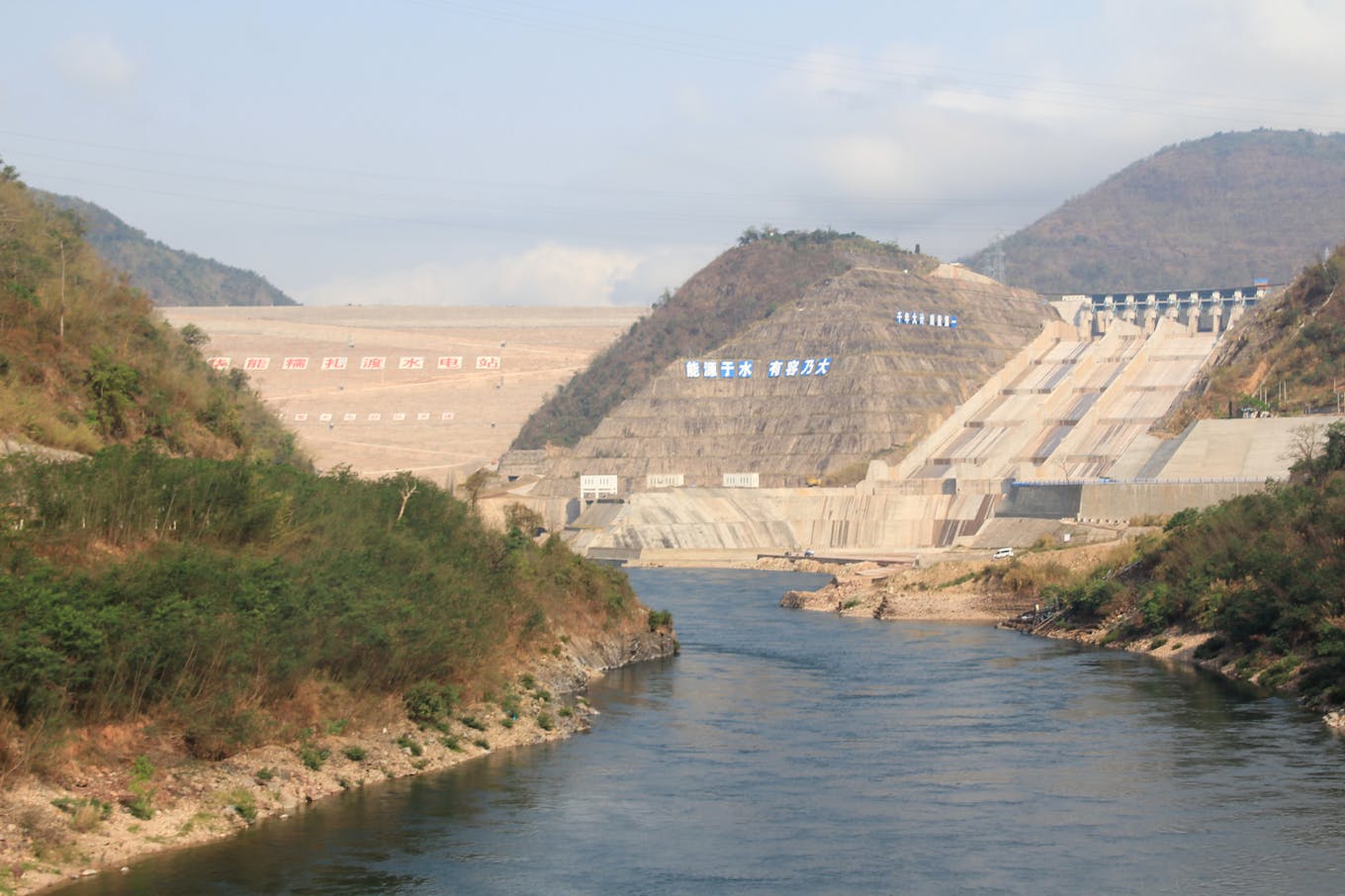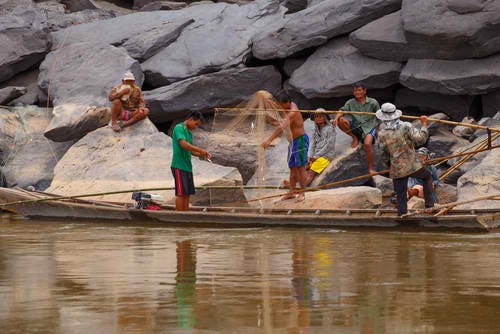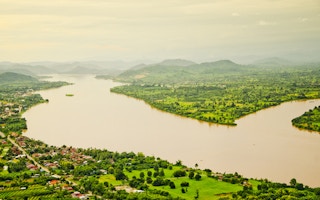The July collapse of a dam in the Xe- Pian-Xe Nam Noy hydroelectric plant in Laos that killed 35 people and displaced thousands has raised alarm over the Lao government’s relentless pursuit of hydropower, less than a year after a smaller plant broke elsewhere in the country.
To continue reading, subscribe to Eco‑Business.
There's something for everyone. We offer a range of subscription plans.
- Access our stories and receive our Insights Weekly newsletter with the free EB Member plan.
- Unlock unlimited access to our content and archive with EB Circle.
- Publish your content with EB Premium.
On August 7, acting on growing international criticism of its mega dams, the government issued a review of all dams under construction and paused new hydropower projects on its part of the Mekong River.
However, it looks like the planned dam projects will move forward, despite the government’s declarations. Developers of both the Pak Lay and Pak Beng dam projects on the lower Mekong basin have reportedly said that the dams have not been authorised to be put on hold nor are they under review.
Both dams are still in the planning stages and are only two of the 11 dams proposed in the area. According to data from the Mekong River Commission (MRC), by 2040 there will be a total of 120 hydropower projects in Laos alone.
“In Southeast Asia there are loopholes around regulations for hydropower projects. You don’t see how low standards have been implemented until an accident happens,” said Han Phoumin, energy economist at the Jakarta-based Economic Research Institute for ASEAN and East Asia.
He added that developing countries in the region mainly depend on Chinese investment for their energy projects, which often fail to reflect global standards for dam safety.

The large hydropower projects planned on the main stem of the Mekong river have received strong protest from local communities and environmental groups worldwide. Image: Waterpolitics.com
Around 80 per cent of all hydropower projects in Laos are funded by foreign investors, estimated Courtney Weatherby, a research analyst at the Stimson Center, a Washington-based policy research center that explores alternative options for hydropower in the Mekong region. She said: “It’s a multi layered investment for these investors and so they are very committed to it. There is a lot of pressure on the government to cooperate and to use those resources as a way of improving the economic situation of Laos.”
In the 1990s, China was the first to dam the mainstream of the Mekong, after American plans to develop Southeast Asia’s economy through hydropower failed and the region descended into war thirty years prior. Today, most of the foreign investors of these mega dams are Chinese, who build the plants with Chinese materials and labour.
The dependency of countries like Laos and Cambodia on foreign investment makes the management of large hydropower dams complicated. Dam building works on a project by project basis, which means that investors can come in and choose to build from an inventory of possible dam locations in these countries. These locations are not ranked according to economic feasibility or ecological impact, leading to a haphazard buildout of dams that often ignores social and environmental risks.
“
“You don’t see how lower standards have been implemented until an accident happens.”
Han Phoumin, Economic Research Institute for ASEAN and East Asia
Blocking rivers with massive dams can have a disastrous impact on river biodiversity, disrupting natural ecosystems and the movement of migratory fish. This has led to sharp declines in fish populations in the Mekong, which affects the traditional livelihoods of communities living along the river. Freshwater Irrawady dolphins, native to Southeast Asia, could become extinct as dam construction damages their habitat by altering water quality and increasing boat traffic on the river.
Navigating the Mekong’s energy terrain

Nuozhadu dam on the Mekong River. Supply of hydropower far exceeds demand, but plans to build more are still marching on. Image: Water, Land and Ecosystems, CC BY-NC 2.0
The issue of dam mismanagement is compounded by underdeveloped transmission networks that exist within the diversified energy landscape of the Mekong region. Countries such as Cambodia, Laos and Myanmar have a greater supply of indigenous energy resources, while Thailand and Vietnam have largely built out their hydropower potential and increasingly rely on exports to meet rising domestic demand.
Both countries are the main energy importers from Laos, where little domestic demand for electricity has led it to export 85 per cent of its total energy production. According to Weatherby, if only Laos could effectively stop the flow of dam development there could be “an opportunity for [the country] to change the type of battery it wants to be for Southeast Asia.”
China’s Yunnan province, further upstream on the Mekong, has similarly generated a surplus of energy due to its heavy investment in hydropower projects over the years. Research from the Stimson Center reveals that Yunnan wasted almost “two Thailands worth of electricity” in 2016. Due to internal political-economic challenges, there is no available market to transmit energy from western China to demand centres on the east coast.
Mismatch between demand and supply of energy in the Mekong has led to greater calls for a strategic, basin-wide energy plan that can effectively manage energy flows between the countries that share the river. In an interview with Eco-Business, the MRC said that it is working to complete its Sustainable Hydropower Development Strategy for the Lower Mekong Basin by early 2019. The plan aims to harmonise the level of hydropower development between exporting and importing countries and identify alternative pathways that can help prevent dams’ detrimental impacts from spilling across boundaries.
“There’s a significant jockeying for position among investors, government officials and those with interests in the region to see what the transmission landscape is going to look like in 10 to 15 years,” said Veysey. “That will determine in part who’s going to supply the power and where that power goes.”
Are mega dams here to stay?
Even though mega dams in the Mekong have earned a bad reputation, countries are lured by the substantial economic benefits of hydropower. Hydropower generation in the Mekong is predicted to lead to more than $160 billion in economic growth by 2040. Government ambitions for hydropower are based on the idea that such gains can lift their countries out of poverty.
But to what extent do these benefits trickle down to the local population, especially to communities that have had their lives altered by the burgeoning presence of dams?
“This depends on the extent to which the government maintains national control over the ability to direct these investments and how the dividends are reinvested in Laos,” said Veyser.

Fishermen along the Mekong River in Thailand. Scientists say that the Mekong River has around 850 known species of fish, which are being threatened by the proliferation of hydropower dams along the river. Image: Nuiginola / Shutterstock.com
As it is unlikely that the Mekong region will do away with mega dams any time soon, efforts should be concentrated at enhancing the inherent benefits of large hydropower while reducing negative socio-environmental impacts. Employing local partners and stakeholders in the foreign-backed dams could mark a move towards greater equality and pave the way for real economic development.
He added: “People are very comfortable with building large hydropower. There’s that track record and people know these resources can easily be dispatched and run more power out when you need to.”
Moreover, with the possibility of energy alternatives such as solar looking to change the game by being very cheap, future dam projects can be made more sustainable by integrating other renewable resources. In China, a solar photovolatic plant was created to co-exist with a large hydropower dam in the Longyangxia Dam Solar Park, becoming the world’s largest hybrid project to date.
The formulation of a robust energy grid linking countries in the Mekong is key to leading the sustainable development of the region’s hydropower. According to Weatherby, although a transnational, systems approach has largely been absent from the conversation, the future could see Laos acting as a regional grid operator that exports China’s excess energy flowing from upstream Yunnan while also tapping on its own solar potential to meet domestic demand.
“The damage from those dams is already done” she said, referring to China’s mega dams. “There’s no real way to reverse that.” But there is still a chance that many of the planned dams in Laos and Cambodia can be put on hold, while greater regional cooperation in energy plans could save the Mekong from further destruction.
Weatherby said: “A regional energy plan that distinguishes the red lines from acceptable impacts will allow countries to take the worst projects off the map.”










